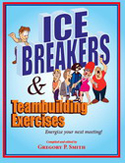Most businesses spend more time and energy trying to find new customers than retaining and making their current ones happy. The logic behind customer retention management (CRM) is simple — It costs far less money to keep customers happy than to spend much more money replacing the unhappy ones with new customers. If you take care of your customers they tell their friends about your business and will in the long run end up spending more money. It is not rocket science. Let me provide you an example of what I am talking about.
I dread eating at airports. If you travel as much as I do, you are probably familiar with the “Three G’s” as it applies to airport fare—Grumpy, Grouchy and Gross.
Recently, I had an early flight to catch at the Ontario, California airport. I found myself standing outside the closed and gated doorway to an Applebee’s restaurant ten minutes before opening time. I just knew they would be late opening the doors and I expected to receive the usual grumpy service common at most airports. I was wrong!
Bam! The clock struck five, the lights popped on and this charming and professional person opened the doors. She greeted me with a smile, a warm “hello” and told me to sit anywhere I wanted. I never had seen such a positive attitude at 5:00 in the morning.
As I enjoyed my meal, I watched her cheerfully greet customers, many of which she called by their first name. They were the “regulars” she said. Felicia was the remarkable person who made that small restaurant pleasant and memorable. Next time I return to the Ontario Airport, I guarantee you this is the place I will go to first.
Here are seven steps to build customer loyalty.
1. Select the right people. In the book, From Good to Great, Jim Collins said, “People are not your most important asset, the RIGHT people are.” Most businesses do a miserable job hiring people. They hire just anyone, provide little or no training and place them on the front-line with customers. Spend more time recruiting and hiring the right people with good personalities. Focus on those who are friendly and demonstrate an interest and enthusiasm for the job.
2. Sensationalize the experience for your customers. Good service is not good enough. A Gallup survey showed a customer who is “emotionally connected” to your place of business is likely to spend 46% more money than a customer who is merely “satisfied” but not emotionally bonded.
3. Set performance standards. Outline the behaviors of how employees should act, speak and respond to customer needs and requests. One of our clients developed twenty customer service commandments outlining the actions and behaviors he wanted his service people to provide to customers.
4. Sustain on-going training and reinforcement. Good customer service skills are not natural for most people. Effective customer service training must be reinforced and taught on a recurring basis. For example, the Ritz-Carlton hotels provide a thorough customer service training program for all of its employees during their orientation. Then each supervisor conducts a daily “line-up” to review one of the commandments with his employees ten minutes before each shift.
5. Shower good employees with rewards and recognition. It is hard to find and keep good employees. So do everything in your power to retain and motivate them. Sure, employees want to be paid well, but they also want to be treated with respect and shown appreciation. The front-line supervisor has the greatest impact on motivating and retaining employees.
6. Survey your customers and reduce your defection rate. On average, businesses lose 15-20 percent of their customers each year to their competition. All businesses encounter this, but few do much about it. To improve retention, one client sends out a customer service report card to its top customers every month. This requires an evaluation based on four specific criteria. They tally the results and make sure employees see the scores. This motivates the employees to do a better job.
7. Seek customer complaints with enthusiasm. For every complaint there are at least 10 other customers that visited your business who have the same criticism. A portion of those 10 people just took their business to your competitor. Look at customer complaints as an opportunity for improvement.
You might be interested in our customer service video training library to help train your staff.
########################################
UPCOMING CLASSES AND EVENTS
DISC Certification Group Coaching Training Program
(Webseminar)
Upon successful completion of the training, you may teach and conduct workshops in your organization or training practice. Each class is limited to five people.
Upcoming dates:
December Class
Dec 12, 13, 19
2:00-3:30 p.m. ET
http://ow.ly/6Ogw4
Limited seating
Cost: $895
For more information:
http://www.chartcourse.com/disctraining.html
Greg Smith | Lead Navigator | 770-860-9464 | Chart Your Course International
Chartcourse.com | HighperformanceOrganization.com
Related posts:
- Customer Service Techniques and Strategy that Drives Outstanding Customer Service
- Seven Steps To Increase Sales and Build Customer Loyalty
- Great Customer Service Techniques by Trader Joe’s
- Good Customer Service: Beans, Bacon, Bologna, and Beauty Products
- Customer Service Training: The Ritz Carlton Way
















One Response to Great Customer Service is Not Grumpy, Grouchy or Gross